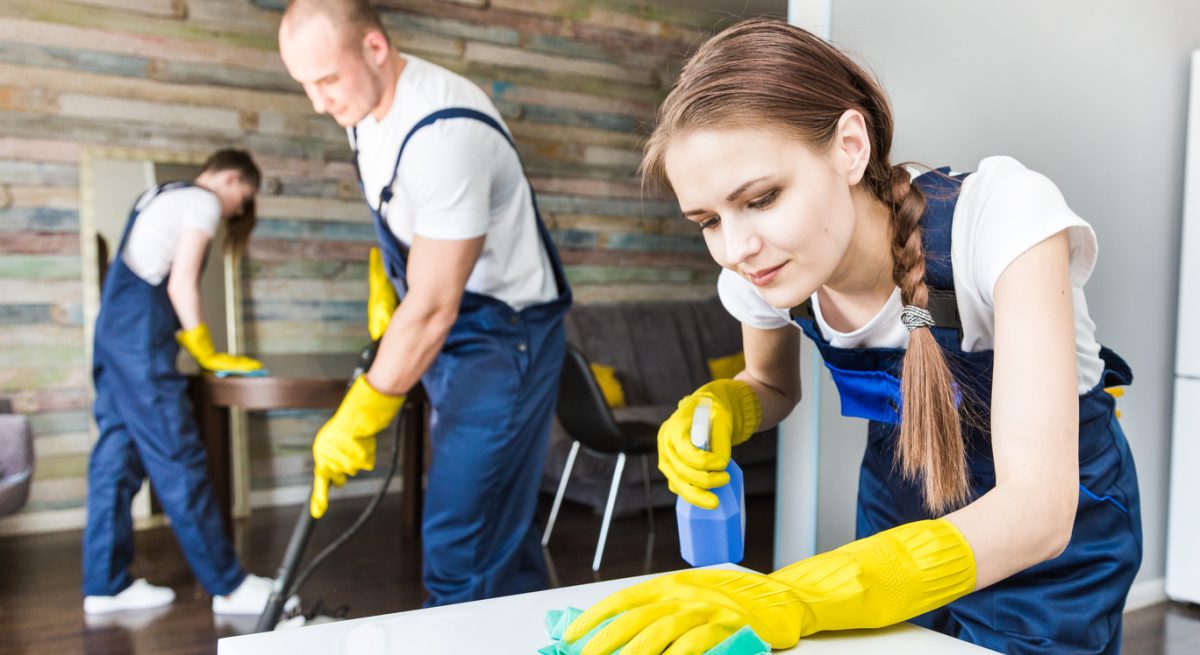Four Cleaning Best Practices to Keep Your Restaurant Inviting
3 Min Read By Carlos Albir Jr.
Running a profitable restaurant can be a challenge for a multitude of reasons. During a global pandemic, it can seem nearly impossible. With food costs rising and labor shortages causing foodservice establishments to increase wages, profit margins are being squeezed tighter than ever. Thus, maintaining a loyal customer base is paramount.
While restaurants are accustomed to prioritizing cleanliness to maintain food safety, new infectious disease threats are making cleanliness even more important for upholding public health as well as diners’ confidence. Thankfully, there are strategies that managers and employees can follow to help keep restaurants safe and inviting.
Restaurant Cleaning Tips that Take the Cake
Visibly clean restaurants showcase a commitment to safety and make these environments more welcoming for guests. Meanwhile, poorly maintained front-of-house (FOH) areas can be a detriment to a restaurant’s reputation and bottom line. In fact, a 2021 Harris Poll found that 74 percent of Americans say dirty restrooms would cause them to have a negative perception of a business.
Considering one small lapse in cleanliness can have a domino effect on a business, it’s important to consider facility maintenance best practices that support guest satisfaction. These include:
1. Establish a cleaning checklist
A September 2021 survey from the National Restaurant Association uncovered that nearly 80 percent of restaurants are understaffed. Therefore, it’s crucial that the employees you do have clearly understand cleaning expectations and protocols. A great way to get started is by establishing a cleaning checklist and assigning when certain areas will likely need cleaning and sanitizing. As 90 percent of consumers are more focused on cleaning, ensure high touchpoint areas of your restaurant, like tables, counters, door handles, toilet handles, and more are cleaned often during open hours.
2. Properly address restrooms
Restrooms are one of the most germ-prone areas of a restaurant due to their purpose and their tendency to be highly frequented. They can also dictate diner perceptions about the entire restaurant’s cleanliness levels. For these reasons, investing in restroom maintenance is key. Well-stocked and regularly maintained restrooms enable both diners and employees to perform proper hand hygiene, which helps to reduce the spread of germs throughout the restaurant. An added reason to focus on your restaurant’s restrooms is that nearly 90 percent of Americans would not visit a restaurant with negative online reviews about its restrooms. You may also want to consider having a visibly posted checklist in place for when employees are completing restock and cleanings times to ensure customer confidence.
3. Incorporate entrance mats
Entrances need to make a good first impression, as they are the first place that guests gather upon arriving at your restaurant. Placing mats at the entrance not only helps to minimize conditions for slips and falls, but they help keep the majority of dirt and debris from being tracked throughout your restaurant. This can reduce the burden of floor care, as staff can spot clean it more quickly and won’t have to mop floors at the entrance as frequently. When selecting mats be sure to install those that will lie flat and have scraping capabilities to effectively remove soils from shoes and trap moisture. However, just placing the mats isn’t enough – have a plan to regularly vacuum the mats or have them changed out, especially in the winter or rainy seasons. Have wet floor signs easily accessible when needed in the presence of moisture or spills.
4. Regularly check cleaning tools
First off, consider selecting high-quality cleaning tools, as lower quality tools are more likely to wear out quicker and drive-up costs. There are even durable sustainable tools made from recycled materials, like brushes and broom handles made from repurposed plastic bottles and mop heads made from textile scraps.
It’s also essential for restaurants to regularly maintain cleaning tools and confirm they’re stored properly when not in use. Cleaning your tools helps to reduce cross contamination, and training employees on why and when to use color-coded tools is key. For example, there should be unique sets of tools for the kitchen and the restroom. This helps to ensure your employees aren’t spreading germs by using dirtied cleaning tools, or aren’t risking injury to themselves and others.
Communicate Your Cleaning Steps for Success
The majority of restaurant areas are customer facing, from the entry and host areas to the bar and dining areas to the restrooms. Some restaurants even have open concept kitchens that allow guests to see the cooking process more closely. As a result, cleanliness needs to be a priority as it supports food safety and infection prevention. Even posting placards or decals in entrances or windows to communicate the establishment adheres to best practices can help to ensure customer peace of mind when patronizing the business.
Overall, the most important aspect of keeping your restaurant inviting is staying organized and clearly communicating cleaning measures with your guests and employees. Enhancing cleanliness and diner confidence will drive repeat business and profits at an increasingly challenging time for the foodservice industry.


